Lyme Regis in Dorset is one of my favourite beaches to beachcomb, mostly because of the things that you can find there. We don’t get to visit this beach as often as I would like because it takes us about two and a half hours to get there, but it is without a doubt worth the trip. The first time I went to Lyme Regis, I was hooked after finding a little green poison bottle. I didn’t know at the time that it was home to a Victorian rubbish dump. Imagine my excitement when I discovered that tiny little bottle and realised that there was, in fact, an old rubbish dump there.

What to expect from our article
What can you find at Lyme Regis?
The things you can find at Lyme Regis can differ day to day, but you can mostly find sea glass, pottery, bottles, and fossils. I have also found some other household items, like an old iron and even a teapot; the weather does have a huge effect on the items that can be found there.

The seasons also impact what you can find; there are many more people on the beach during the summer months, which means fewer things to find. Whenever there is a storm at Lyme, some of the cliffs are inevitably exposed, spilling their contents onto the beach. I find that this is the best time to go.

While some people think that it is just plain old trash being spilt on the beach, we beachcombers absolutely love it! I can quite easily come home with a bag full of loot that I have collected off the beach. On my last trip to Lyme, I found a fragment of pottery with hearts on it, and it was my favourite find of the day. After a bit of research, I discovered it was from a Royal Doulton bowl.
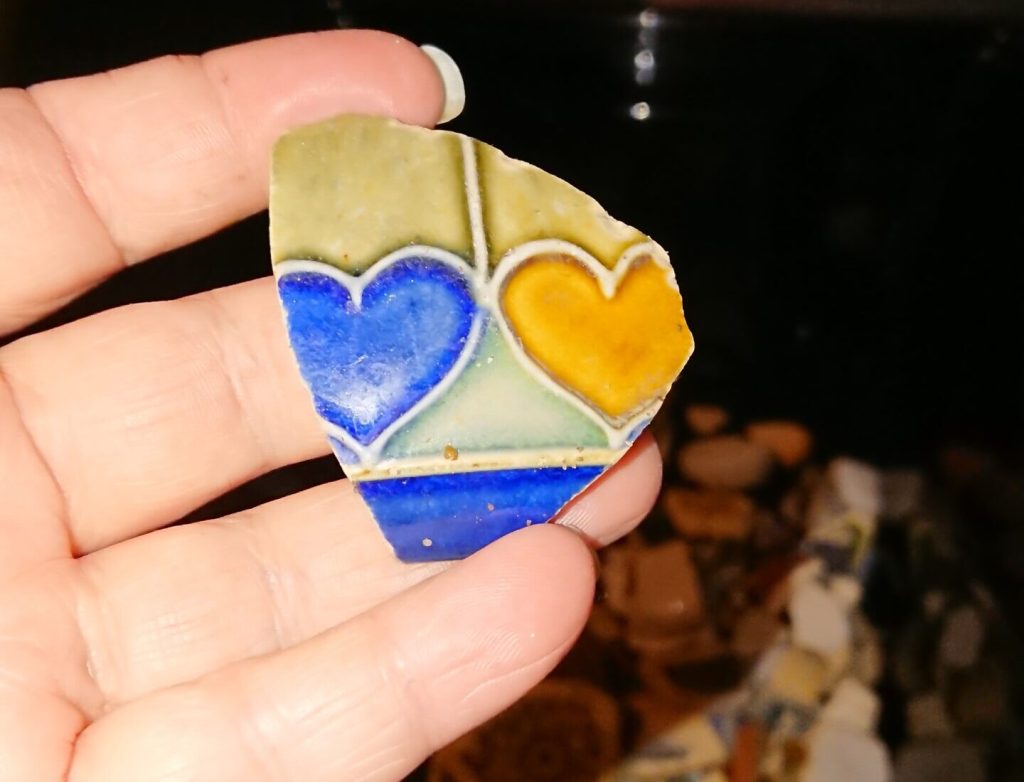
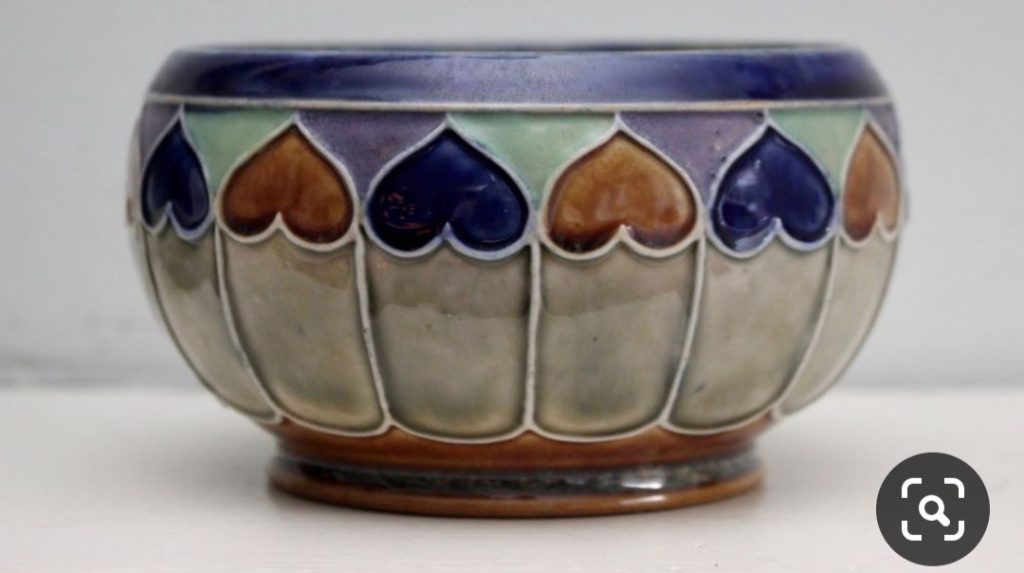
Is it safe to beachcomb at Lyme Regis?
Lyme has been subject to a few landslides in the past. These landslides can be extremely dangerous, but they do not happen very often. It’s always best to stay alert when visiting any beach, with Lyme especially so, but as long as you don’t go too close to the cliffs, it is relatively safe to beachcomb there. Another thing that you really need to be careful of at Lyme is the tide times. When the tide comes in, it comes all the way up the beach to the cliffs, which completely covers all of the access points, leaving you trapped.
I cannot emphasise enough how dangerous not keeping track of the tide can be. You can download an app on your phone called AnyTide. I’ve been using it for the last three years, and it’s always been reliable. Also, one other thing to note is that the tide comes in quicker at Lyme Regis than at Charmouth, so if you are making the trip across to Charmouth, make sure you give yourself enough time to make it back.

Spittles rubbish dump
There has been some concern about the old rubbish dump at Lyme. We associate rubbish dumps as filthy, dirty, smelly, and unsanitary places, but Victorian rubbish was quite different from ours. Modern-day trash is mostly plastic bags and packaging, nappies, and food waste; we have a good recycling process in place, so most of the household waste that goes to landfill is the stuff that can’t be reused or recycled. The rotting food is long gone at Lyme, so there is absolutely no smell at all at this dump; you wouldn’t even know there was a dump there if you weren’t told about it. People back in the day tended to reuse a lot of things, like reusable nappies rather than disposable ones.
Household products came in jars and bottles, and most things were biodegradable, unlike today, when nothing seems to degrade. The Victorian rubbish dumps are nothing like ours, and those jars and bottles have now become collectables; the broken bits get turned into sea glass and, in turn, get picked up by visitors. If you are having a poke around in the dump, as a precaution, you should wear gloves; that’s not because I think it’s dangerous, but because they didn’t have a lot of the safety regulations back then. Some of those bottles may still contain products that have no labels. The Victorian era was well known for its poisons. I haven’t found anything there with its contents still intact, but that’s not to say it will never happen.

Household products came in jars and bottles, and most things were degradable, unlike today, where nothing seems to degrade. Victorian rubbish dumps are nothing like ours, and those jars and bottles have now become collectables; the broken bits get turned into sea glass and, in turn, get picked up by visitors.
If you are having a poke around in the dump as a precaution, you should wear gloves; that’s not because I think it’s dangerous but because they didn’t have a lot of the safety regulations back then. Some of those bottles may still contain products that have no labels. The Victorian era was well known for its poisons, I haven’t found anything there with its contents still intact, but that’s not to say it will never happen.
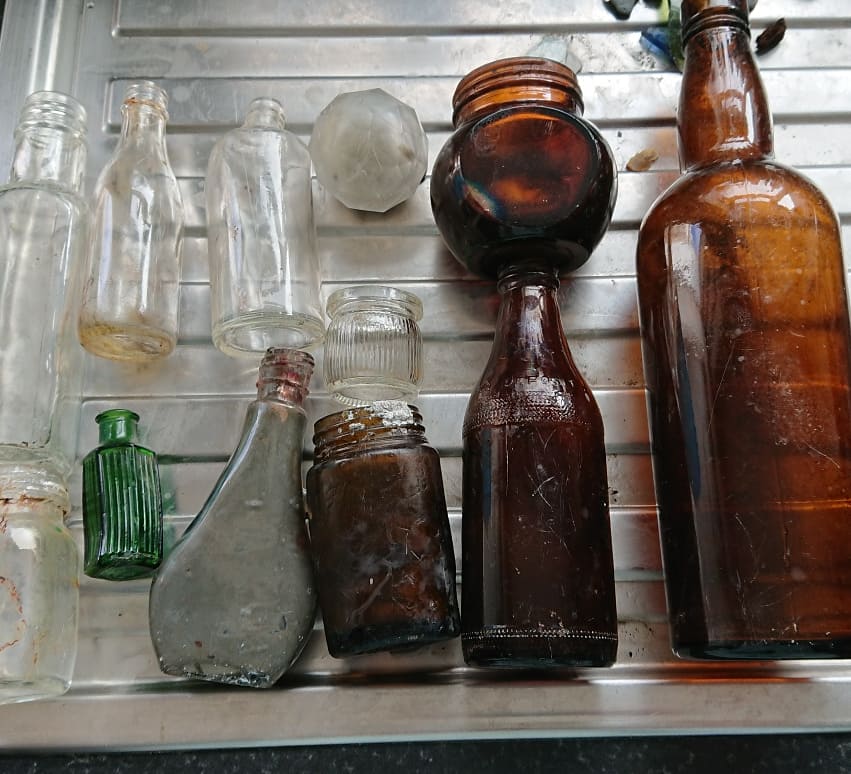
Fossils
Lyme Regis is also along what is called the Jurassic coast, so the site is packed full of fossils; every time there is a landslide, there will be plenty of fossils to find. Fossil hunting has been a pastime at this particular beach as far back as the 1800s. Mary Anning made a good living from collecting and selling fossils at Lyme. She and her brother discovered the first ichthyosaur that was found there. Mary became famous for her work, documenting her finds and, in the process, making substantial scientific breakthroughs at a time when it was frowned upon for women to carry out such work. She even went on to open her own shop selling the fossils she found. It is said that the tongue twister “She sells seashells on the seashore” was about Mary herself.

Visiting Lyme Regis
The first time we went, we parked at the Charmouth Road car park, not realising the number of steps there would be down to the beach. Well, it’s not so much the going down that was the problem, it was the going back up! It’s great if you are fit and healthy, but not so great if you have any ailments, especially after walking on the beach all day. I took about two weeks to recover from that trip because I have fibromyalgia.
I can’t quite remember how much we paid to park at Charmouth Road car park, but I think it was £2 to park all day. We also did the park and ride a bit further up; that was better as the bus drops you off right at the bottom by the beach, and we just walked around the path to the other side. It cost about £7 for parking and for the three of us on the bus. This is seasonal parking as it’s in a field. You catch the bus back to the car park across the road from the post office. We have also parked at the bottom in a local car park. Out of season, this is fine, but during the summer months, spaces go very quickly. We didn’t have to pay for parking on the day we went as the council allowed free parking for Christmas shoppers.


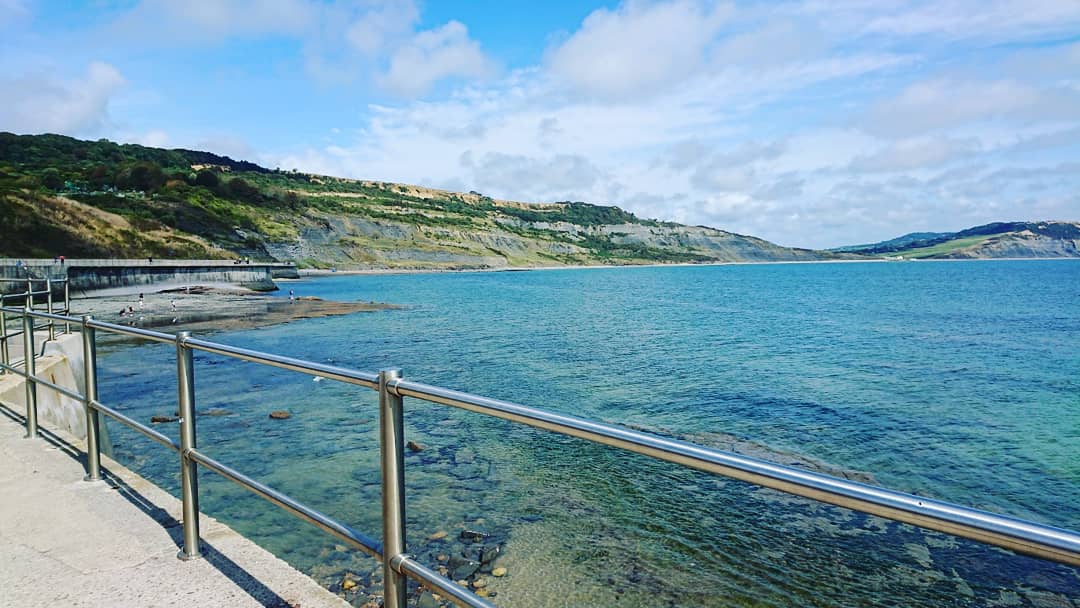
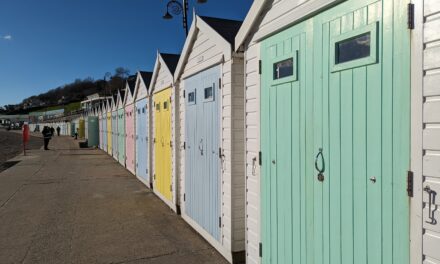

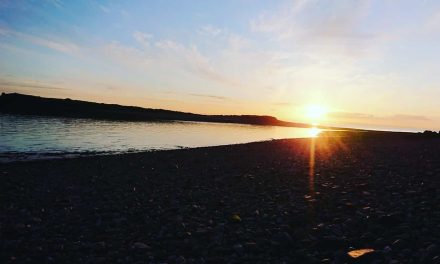




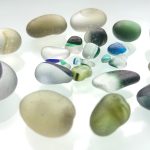

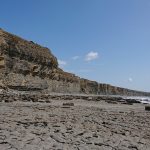

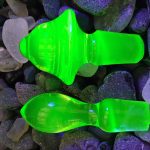



Trackbacks/Pingbacks